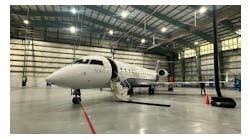For Airlines to Avoid Glitches, They Need to Leave Jetsons-Era Tech at the Gate
When American Airlines scrambled to fix a situation that brought down national operations and briefly halted flights across America in late July, few people were surprised to hear that “a tech glitch” was the source of the problem. To their credit, American and its IT staff resolved the problem relatively quickly – 40 minutes later. Nonetheless, the incident highlights how reliant the airlines are on a web of complex computer systems, many of which were designed for a simpler time. While other industries are applying analytics to massive integrated datasets, the airlines are stuck somewhere before the integration part.
In fact, it was airlines that led the first Tech Boom in the late 1960s when they replaced primitive electromechanical counters with some of the world’s first commercial computers. Built in parallel with a system that IBM was developing for the US Air Force, American Airlines’ SABRE established the model that quickly spread to Delta, Pan American and other airlines.
Fast forward to 2018: airlines still use these systems, built on half-century-old technology.
Since then, airlines have patchworked dozens of solutions on top of the ancient mainframe to plan and manage operations. Some of these tools optimize efficiency (revenue management), others safeguard regulatory compliance (maintenance) and a few even consider customer experience (web booking). As airlines have merged, systems have been strung together like mismatched Christmas lights, always coming on, but rarely what you would design today.
Judging by airlines’ operational resilience and impeccable safety record, though, these systems do a good job on the core functions. Where they fall short is in opening the door to innovation. For example, when it comes to mining data to manage flight delays or elevating customer communications to the level of even average retailers, airlines get stuck plodding through the mud of legacy systems.
At their core, the major airlines rely on an IBM mainframe technology called z/TPF, which powers airline and hotel reservations systems, as well as other high-volume users, such as Visa and American Express. From the beginning and through subsequent updates, the system was designed to maximize reliability and transaction speed. It succeeds at both.
Amid recent profits, airlines have invested over $40 billion on IT over the past five years, but much of it has just been to keep up, like harmonizing the systems among merged airlines. Other investments have gone into upgrading the big reservations systems so airlines could sell things like seat reservations, baggage fees and economy-plus seating through travel agents.
These upgrades are critically important to an airline’s business. For Southwest Airlines, a new reservations system was a necessity before the airline could fly redeyes or launch international flights (really!). For JetBlue, it was the key to valuable new codeshares with international carriers. Yet, most upgrades have been to individual systems or solutions that leave the legacy architecture intact. Even when airlines install 21st Century IT, they still must interface with systems outside the airline that are often saddled with antiquated limitations, such as four-digit flight numbers.
Fundamentally, the legacy IT structure imposes an artificial disconnect among four parts of the airline that ought to be working together. The reservations team holds a seat for you, but doesn’t manage your flight. The flight operations team puts a plane in the air, regardless of who is onboard. Finance calculates revenue on your flight, but not what you bought last year or this year. Standing apart, the commercial systems market to you, but know very little about all the rest.
The result is petabytes of data residing in disparate systems that have always been cumbersome to connect — until now. The ultimate power of Big Data Analytics is its ability to correlate unstructured data with potential future behavior, such as customer needs, aircraft maintenance or operational disruptions. Following the example of other industries, analytics would enable airlines to devise personalized customer offers to fill unsold seats, for example, or preempt aircraft breakdowns using historical maintenance notes.
Airlines could deploy Big Data today, but it would require a different kind of focus. The first is organizational. By its nature, Big Data promises integrated solutions. By its history though, airline IT serves organizational silos. To capitalize on the promise of analytics, airlines need to look over the heads of today’s organization, which means tapping participation from multiple stakeholders.
Second, solutions need to be lightweight. Most airlines have a wish-list of IT upgrades that could go on for centuries. To move as quickly as the market, though, airlines need to enable analytics that accommodate the existing architecture without tearing it apart or replacing it wholesale. They need complementary analytics platforms that ingest operational data, analyze it and inform new decisions that can be executed within the existing systems.
For example, the frequent flyer department knows about your travel history but doesn’t sell to you. Instead, airlines could use this customer history – coupled with geolocation and other external datasets – to make offers that meet your needs and fill light flights. Or, when flights go awry, they could credit your account with a meal voucher in addition to the frequent flyer points that American has now empowered flight attendants to do.
Finally, disciplined innovation requires speed and focus. By applying design thinking, customer involvement and rapid prototyping, airlines can conceive, test and implement improvements on a new timescale. Whereas today, most airline IT projects stretch over years, the most exciting opportunities may be deployed, tested and improved before today’s projects even make it to the board for approval. An airline that could fast track and rapidly deliver technologies that improve travel experiences for people would not need to talk about what they are doing for the customer. Travelers would be able to feel the benefit themselves. Airlines, on the other hand, would have a better chance of avoiding systemwide glitches that disrupt service and diminish customer trust leading to losses in revenue.
Samuel Engel is the global managing director of aviation at ICF.



